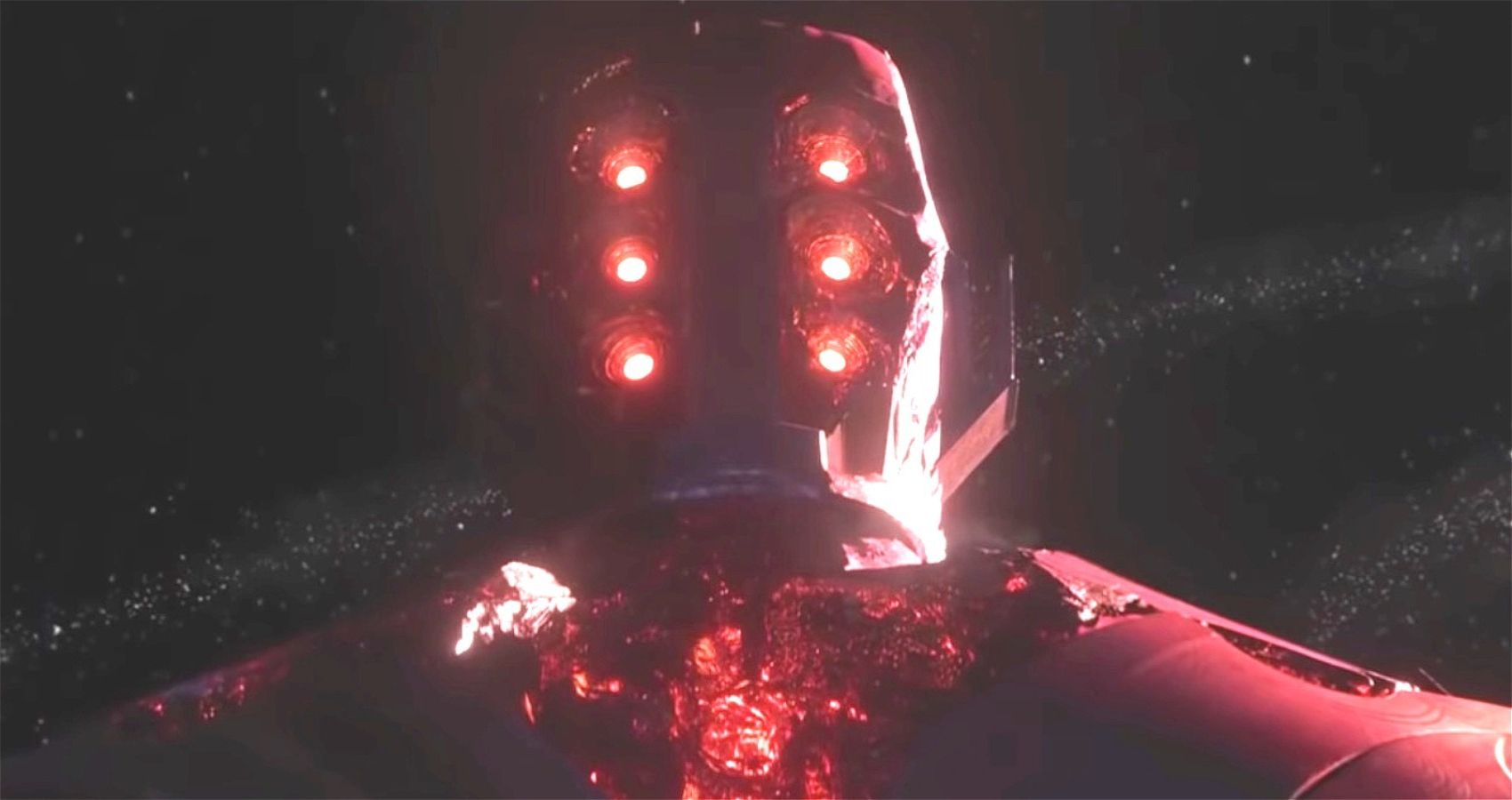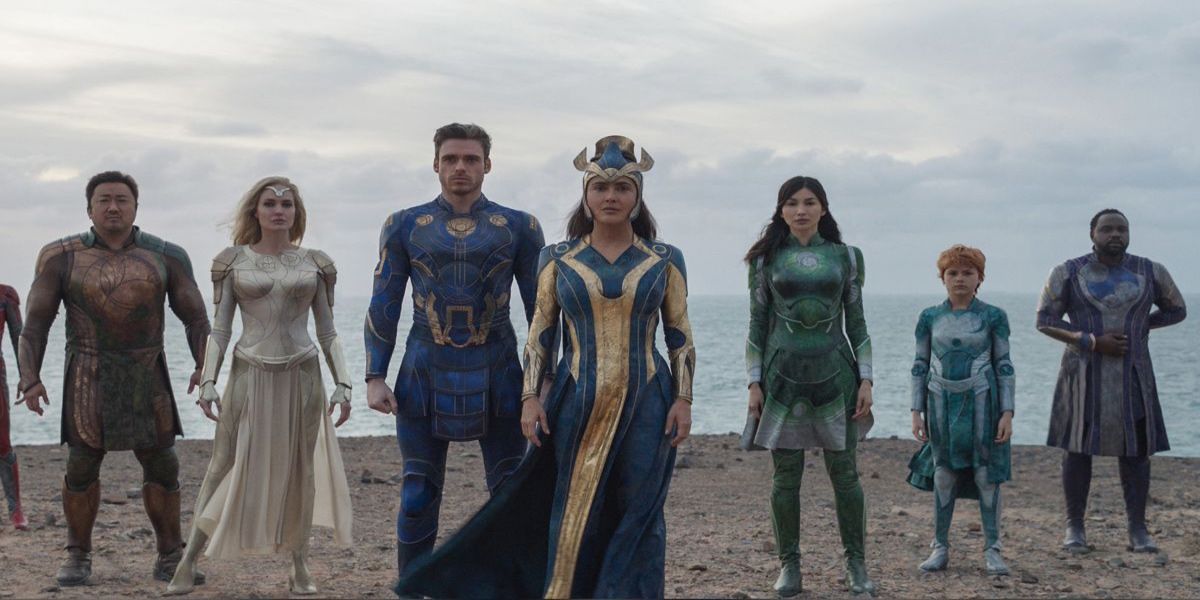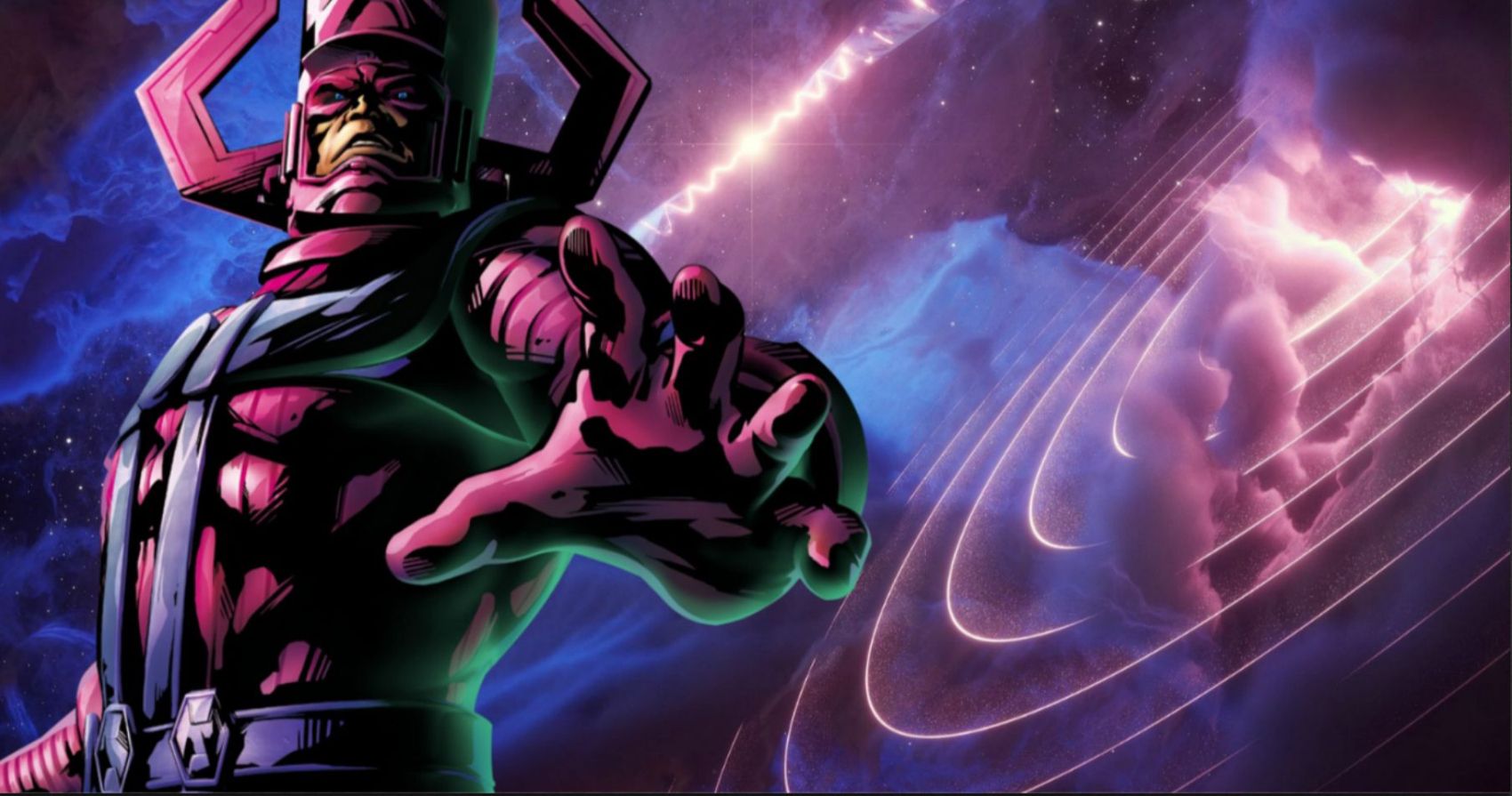Spoiler Warning: EternalsThe Eternals' saving Earth from the awakening of Tiamut the Communicator might not be the last we see of those planet-sized megaliths called Celestials. These galactic giants maintain a type of life cycle throughout the universe according to their will. And their influence over planets such as Earth is governed by a series of four tests they give to civilizations over the course of millennia. These powerful cosmic beings are actually somewhat analogous to scientists, though their decisions create and destroy entire worlds in the blink of an eye.
In Eternals, we learned that the Celestials had seeded Earth with a young, sleeping Celestial named Tiamut, who would awaken when the population of sapient creatures on the planet reached an appropriate level. We also learned that Celestials had created humans to provide cosmic energy for Tiamut, Deviants, to wipe out apex predators that threatened the human population, and Eternals, who became responsible for protecting humanity after the Deviants began killing uncontrollably. While the Celestials only visit a planet every thousand years or so, when they do, the stakes are high, and no one is certain if their species will survive.
Who Are the Celestials?
The Celestials were the first beings ever to exist in the universe. They predate both the Big Bang and the six Infinity Stones. They were created in the First Firmament by the sentient universe in order to create life. But after their creation, the beings split into two different factions: one, the Aspirants, remained loyal to the Firmament, while the other, which would eventually be known as the Celestials, rebelled. While the Celestials eventually won, the conflict was so vast that it shattered the universe into the first Multiverse. Now, the Celestials travel the infinite cosmos, seeding planets with nascent versions of themselves.
Before Eternals, we had already seen 3 of them (if you count the dead one) and they had appeared in the MCU as early as phase 2. The first we saw was Knowhere, which wasn't really a Celestial, just the hollowed-out skull of one. The first living Celestial was Eson the Searcher. The Collector showed him to us in Guardians of the Galaxy to demonstrate the effects of the Power Stone. He stood above a planet with the stone in his staff and destroyed an entire civilization, though his role is typically to seek out planets that would be suitable to begin the Celestial life cycle.
Next, in Guardians Vol. 2, we met Ego the Living Planet, father of Peter Quill and more of a giant face than a traditional Celestial. In Eternals, we saw the rest, though there are others that exist beyond these. There's Hargen the Measurer, charged with quantifying the planets the Celestials survey; Jemiah the Analyzer, whose job is to gather data on their various genetic experiments (fun fact: the bar the Guardians visit in their first movie is called the Boot of Jemiah); Nezarr the Calculator, whose duty is to catalogue the data brought to him by the others; and Arishem the Judge, whose sole purpose is to judge whether each planet is worthy of existing. In Eternals, Arishem is cast as the Prime Celestial, but in the comics, there is one more powerful than they.
The Four Hosts
As part of their plan for the life cycle of these planets, they return to each of them in four tests or "hosts." They have manipulated the Kree, the Skrulls, even the Asgardians in this way. In the First Host, they select the dominant species of that planet and alter their genetic code creating Deviants, Eternals, and slipping a latent mutant gene in the original race. The Second Host is a type of correction. In Earth's case, Deviants had enslaved humanity while the Eternals ignored it. The Celestials destroyed a Deviant kingdom as a form of discipline in an event that became known to humanity as the sinking of Atlantis.
In the Third Host, Celestials prevent influences from outside races, like the Asgardians or Olympians for Earth, on their chosen civilization. The Fourth Host, or final test, is the one in which Arishem appears to judge each planet. Sometimes in this stage, an outside influence will appear and speak for the merits of these races, as the Eternals did for humanity. While this is the process described in the comics, the MCU seems to have skipped directly to the Fourth Host and kind of glossed over the other three.
Celestials vs. Galactus
As for the future of the Celestials, it remains unclear. Though Arishem judged the Earth to be worthy of existing (thankfully), these beings still remain primarily neutral to Earth, meaning they could decide to change their minds and harvest it. Although it's equally likely that the Celestials might do the opposite. If Marvel writers decide to introduce Galactus, which seems highly likely, there is a storyline in the comics where he fights four Celestials at once. It's possible that the writers could use this as a pretext to have the Celestials return to Earth in order to defend it in Eternals 2. As the writer for Eternals, Kaz Firpo, said, "We are, you know, obviously setting the stage for intergalactic, cosmic, megalith confrontations."

.jpg)


